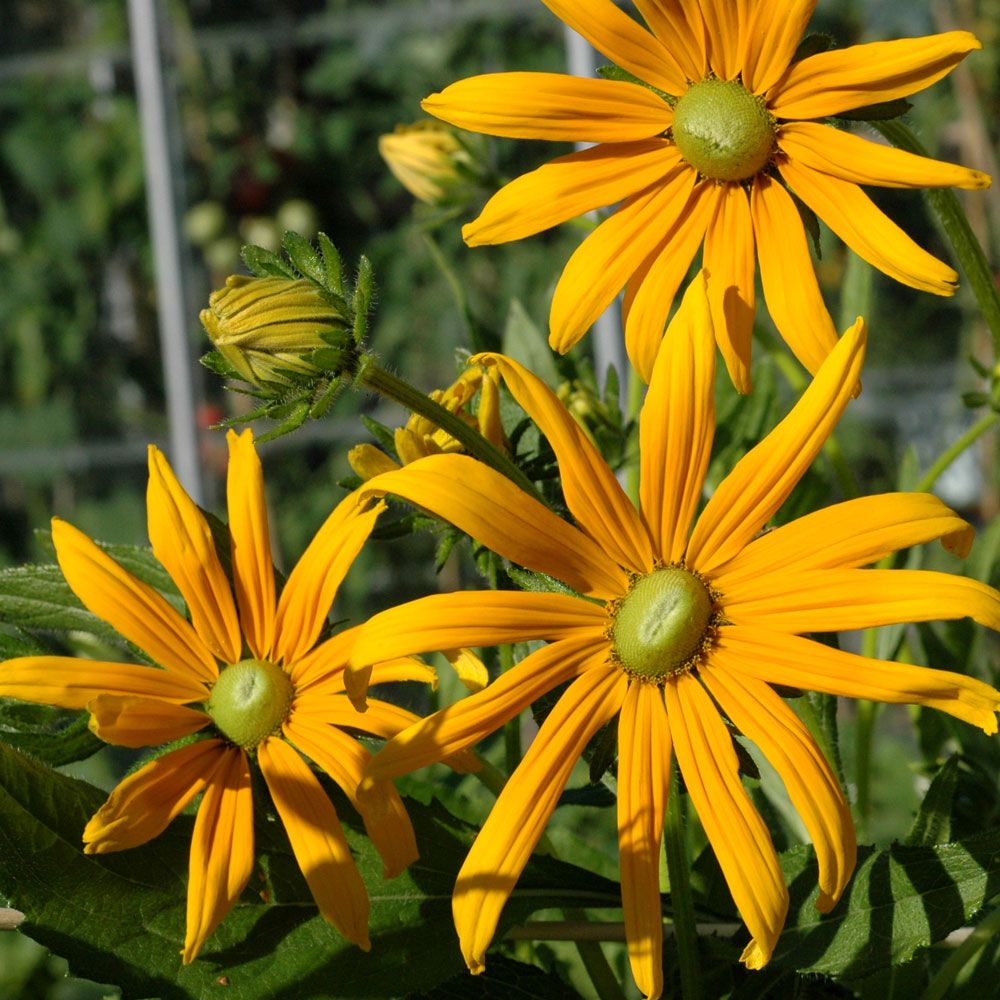
Sommarrudbeckia 'Prairie Green Eyes' Rudbeckia hirta var. pulcherrima Impecta
Rudbeckia hirta 'Irish Eyes'. This tall strain produces large, single golden-yellow daisies with a bright green eye. An outstanding cut flower. Removing faded blossoms regularly will greatly increase the flowering time. Seed heads have good winter interest, and can be used in dried arrangements. Fairly drought tolerant, once established.

Rudbeckia hirta 'Irish Green Eyes' Country Farm Perennials
Try growing and showing 'Irish Eyes' with Dill 'Mammoth' (For some height interest)…and something citrus green to compliment the heat of the yellow/orange…Bupleurum would be good…or Nicotiana 'Lime Green'…also use Blue flowers as an opposite…for some contrast…'Blue Ball' cornflowers will rock with Rudbeckia…

Rudbeckia Green Eyes 50 Seeds Non GMO Etsy
Black Eyed Susans come in a variety of colours, including yellow, orange, rust and pink, with many shades in between. Usually the flowers have black or brown eyes, however not all black eyed Susans are black eyed. Rudbeckia Prairie Sun has a wonderful pale green eye, but is still considered to be a black eyed Susan. Are Black Eyed Susans.
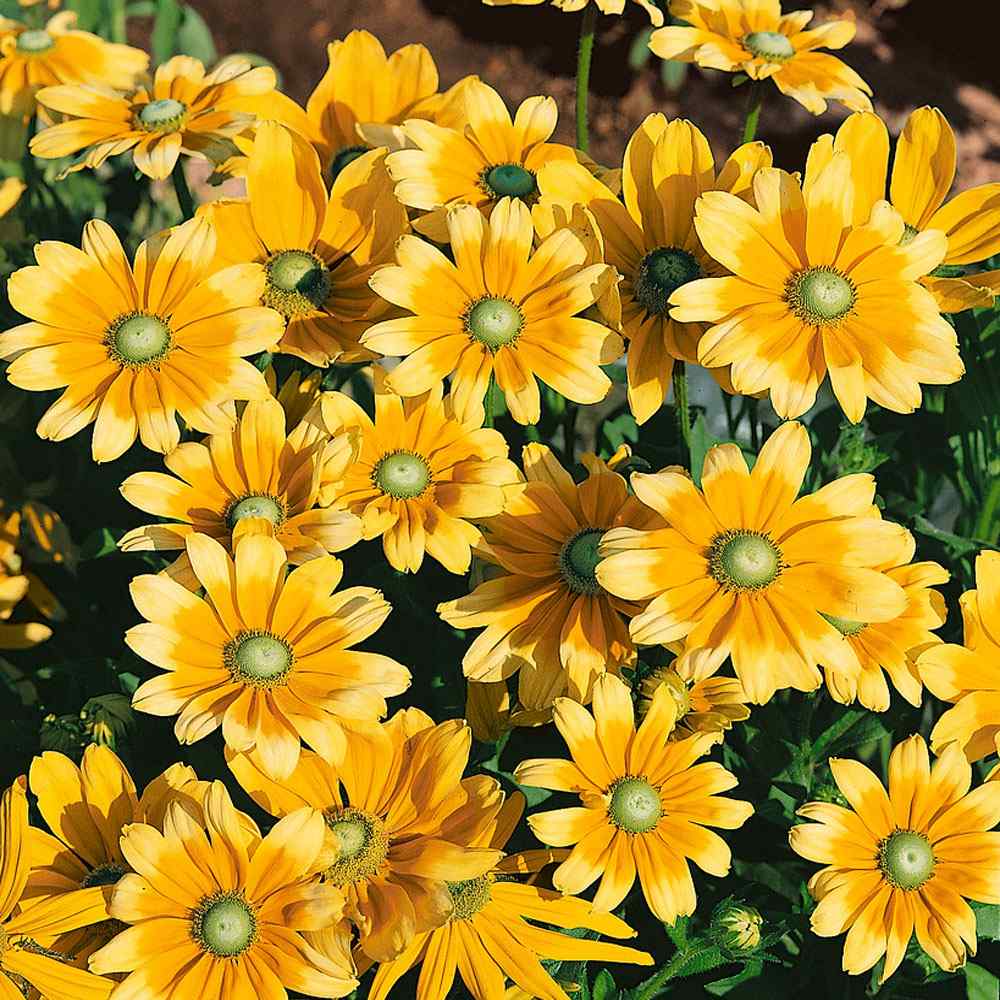
Rudbeckia Hirta Drought Resistant Green Eyes Rudbeckia Flower Seed
black-eyed Susan 'Irish Eyes' a short-lived perennial, usually grown as an annual, to 75cm in height, with classic daisy flowerheads produced from mid-summer to early autumn. Flowerheads are golden-yellow with narrow, slightly-tapered ray florets surrounding a pale-green "eye" that turns yellow-brown as the disc florets open

Rudbekia Jeżówka GREEN EYES (Rudbeckia hirta) (ID 14168)
Rudbeckia blooms from mid to late summer into fall and grows best in temperatures between 70-85°F (21-29.4°C) during the day and above 55°F (12.7°C) at night.Once established, Rudbeckia plants can tolerate drought conditions and higher temperatures. As a result, rudbeckia often survives and thrives during the intensely hot summers of my low desert Arizona garden.
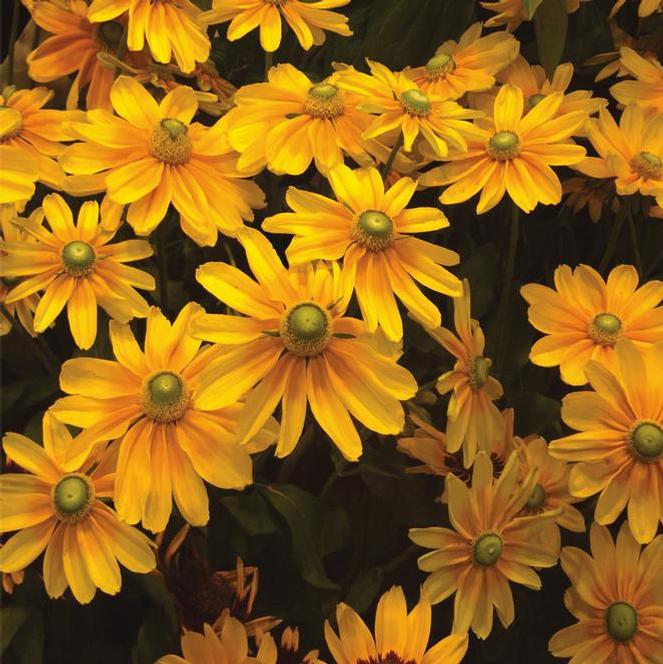
(Green Eyed Susan) Rudbeckia hirta Prairie Sun from Swift Greenhouses
Plant database entry for Black-eyed Susan (Rudbeckia hirta 'Green Eyes') with 2 images and 26 data details.

Rudbeckia Green Eyes. 100 Seeds Etsy
Rudbeckia Fulgida 'Green Eyes' This species is also known as black-eyed Susan or as orange coneflower. It is difficult to differentiate from the R. hirta. It is hardy in USDA zones 3 to 9. 'Goldsturm' is the most common cultivar and has pale yellow flowers. 'Viette's Little Suzie' is a dwarf version of 'Goldsturm'.

30 RUDBECKIA Hirta GREEN EYES / Perennial Easy Long Blooming Etsy
A curious plant with prominent dark brown cones, speckled around the base with golden pollen and surrounded by a ring of green sepals rather than colorful petals. The cone seed heads provide strong fall and winter interest. Height 4ft. Spread 27in. Best companion plants for rudbeckia. These plants make fantastic companions for rudbeckia. 1.
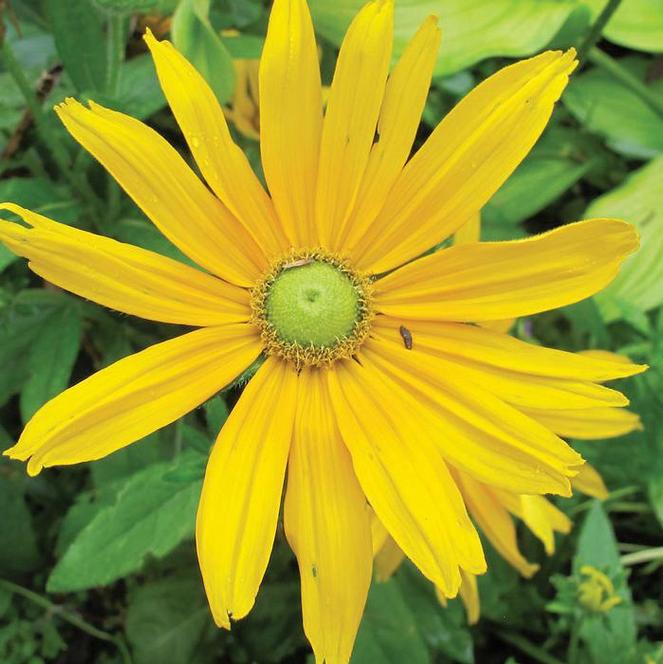
(Green Eyed Susan) Rudbeckia hirta Irish Eyes from Swift Greenhouses
The Rudbeckia genus has a rich history as a native wildflower, popular first as a medicinal herb used by pre-colonial Native Americans and then finding its way into 19th century cultivated flowerbeds.Two of the most common species in the genus are Rudbeckia hirta, often known as black-eyed Susan, and R. triloba, commonly called brown-eyed Susan.

30 RUDBECKIA Hirta GREEN EYES / Perennial Easy Long Blooming Etsy
The petals range in shade from bright yellow to orange-gold, and some cultivars display flushes of red, bronze or mahogany. The flower's eye, or center, is actually more dark brown than black, but some cultivars, such as 'Prairie Sun', have green centers. Common types: There are about 25 species of Rudbeckia, all native to North America.

75+ HEIRLOOM FLOWER SEEDS RUDBECKIA HIRTA "GREEN EYES" VERY UNUSUAL FLOWER! Annual
Rudbeckia are also known as 'Black eyed Susans', 'Brown eyed Susans' and Cone Flowers depending on variety. They have daisy like flowers, grow well in full sun and are drought tolerant easy care group of plants.. Thehe fascinating Rudbeckia occidentalis 'Green Wizard' with its green sepals and large deep red centre that will.
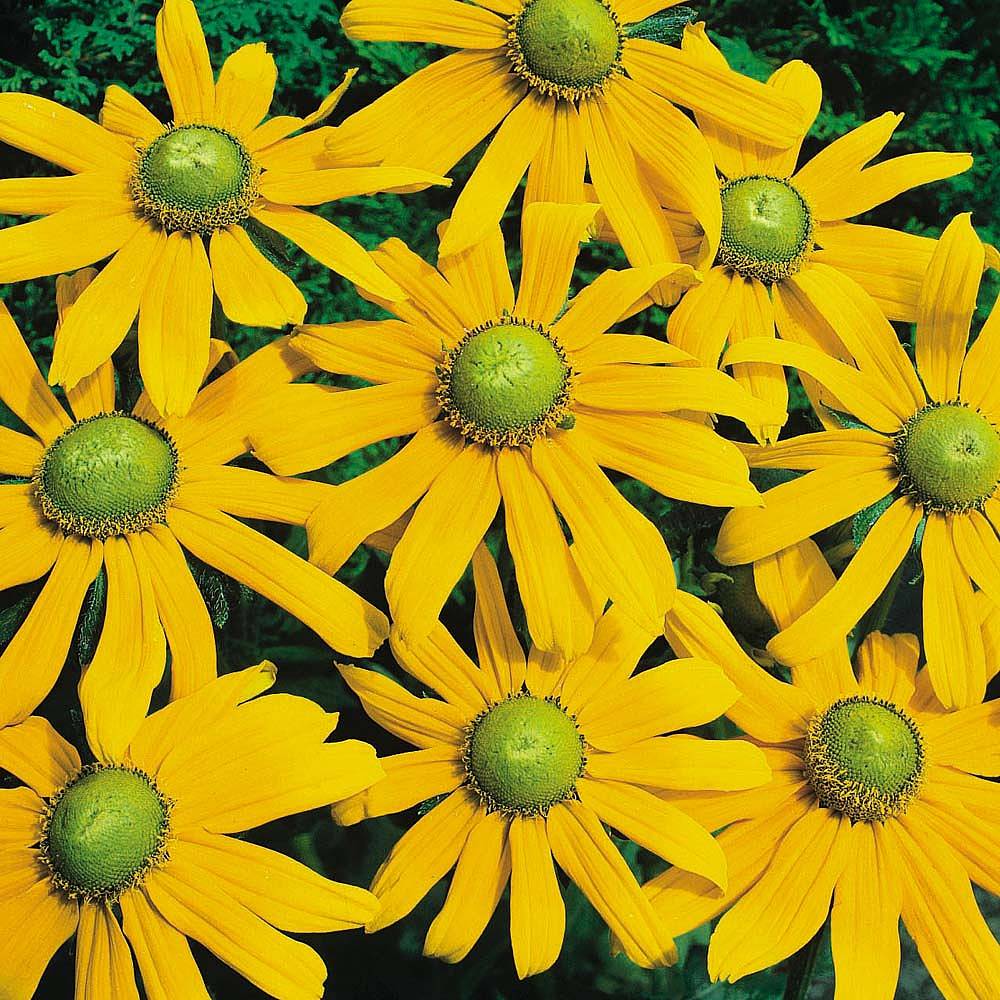
Rudbeckia hirta 'Green Eyes' Thompson &
Grown from Rudbeckia seeds, this variety is both attractive and very unique. Rudbeckia Green Eyes features large 4 - 5 inch (10 - 12 cm) blooms that are golden-yellow in color with bright olive, green cones. They are heavy blooming and make excellent cut flowers. SOWING. Season: Annual. Sow: February - May. Height: 24 inches (60cm)

Rudbeckia GREEN EYES Stock Photo Alamy
Unlike the chocolate brown center disc seen on common black-eyed susans, this one has a green to yellow-green center disc. The leaves on the prairie sun are bright green and grow upright. Rudbeckia hirta moreno. This plant that struggles to reach 2-feet tall produces mahogany-red rays with yellow tips. The mahogany color becomes a little redder.
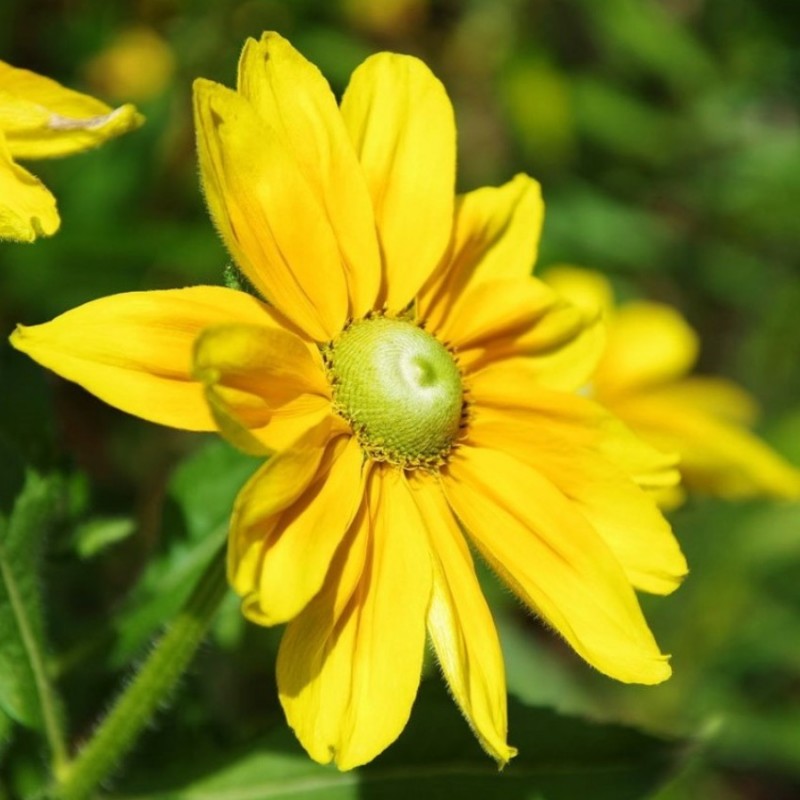
Rudbeckia Hirta Green Eyes
Mass of large autumn daisies flashing beautiful green central cones, surrounded by soft yellow long rays of petals. Soars to 1.5m. in a brilliant autumn display. Full Sun, though will grow obligingly in Part Shade/ Dappled Sun if needed. Hardy in hot and dry gardens. Water-wise plant. Drought tolerant. Frost hardy. Easy grower, low maintenance.

Rudbeckia, Greeneyed Susan (a Monarch favorite) Green eyes, Butterfly garden, Green
A unique characteristic of this rudbeckia is it's lime green eye, surrounded by a striking orange eye zone and bright yellow petals. Blooms were about 6" for us and height approximately 32". It was outstanding in our farmhouse bouquets, paired well with annuals and green foliage! I loved to offset the green eye on this.
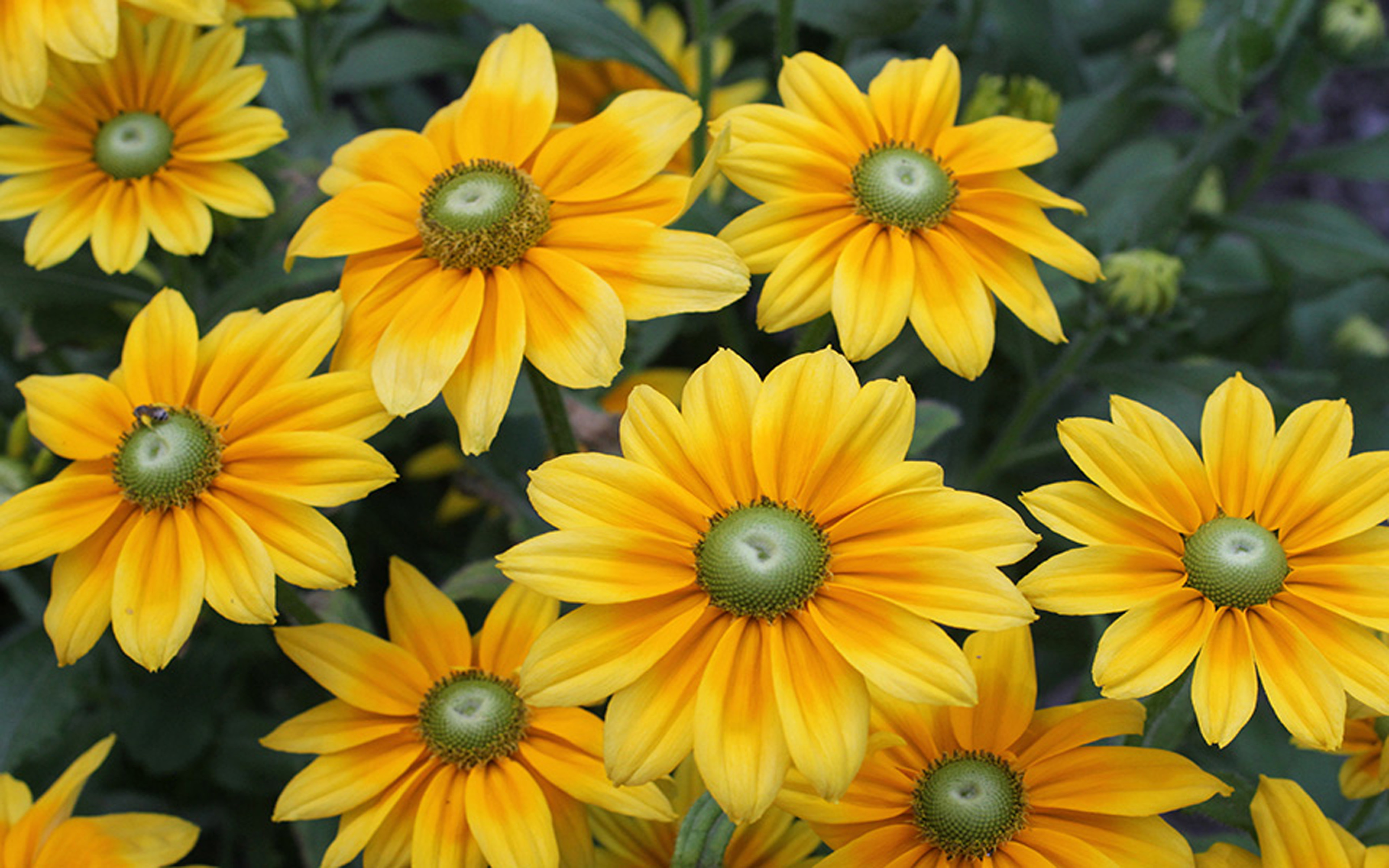
Rudbeckia Hirta Prairie Sun Yellow Orange Flowers With 14 Yellow Orange Petals Light Green Eye
Rudbeckia species are native to North America, and for this reason, much of their history involves Native Americans. Specifically, the species R. hirta is mostly native to the United States. All parts of the black-eyed Susan plant were utilized by Native Americans. The flowers were used to make green and yellow dyes.
